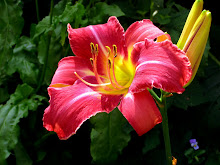
We are big fans of garlic here, now that we grow our own. What a revelation it was the first time we harvested … big, beautiful purple-and-white streaked heads that seemed like a completely different animal from the store-bought stuff. And really, it is. The papery white heads commonly found in the grocery are soft-necked varieties, and nearly all of it is grown in California and shipped around the country. These are milder-flavored cloves, and for most people, the extent of their garlic experience.
And elephant garlic? – not really garlic at all. It’s actually the bulb of a type of leek.
It turns out that, while you will often read that there are hundreds of different kinds of garlic, recent DNA testing by plant biologists has determined that there are actually 10 separate, distinct varieties of garlic, with over 600 cultivated sub-varieties around the world. Five of these distinct major varieties are hardnecked types – and that’s what we grow. They tend to be the deeper, more flavorful types.
We bought our first “batch” from a neighbor who has specialized in big, beautiful, buttery-hot-tasting garlic for years, and have continued to set aside a number of the largest heads each year for replanting; selecting for the most “successful” heads improves the harvest year after year. I won’t go into detailed planting instructions – you can find that anywhere by googling – but if you want to know exactly how we do it here, just email me. It’s easy, actually; you plant in the fall, mulch well, and just wait for them to be ready the next summer. (One caveat: they really, really, really want rich soil, and if you don’t see to that, you will get smallish bulbs.)

And – bonus! – the hardneck varieties produce scapes in the spring, which make amazingly wonderful pesto, and stir-fry nicely as well. The scapes should be removed anyway, so that the plant’s energy will go into making the bulb bigger and better. Now that folks are becoming more familiar with garlic scapes, they’re seen more and more often at farmers markets. Scapes + oil + nuts + cheese = fabulous pesto; basil not necessary (but always good for additional yumminess).
Somehow, miraculously, our garlic has been planted earlier this year than ever before. There have been times when I was frantically getting it into the ground the day before a forecasted snowfall -- so it's not at all too late yet, if you're thinking about giving it a try.
Even if garlic weren’t one of the most delicious things on earth, its medicinal properties would make growing it worthwhile: it has antibiotic and antifungal properties, and has been used since forever to enhance health. But that’s another whole post sometime.

No comments:
Post a Comment